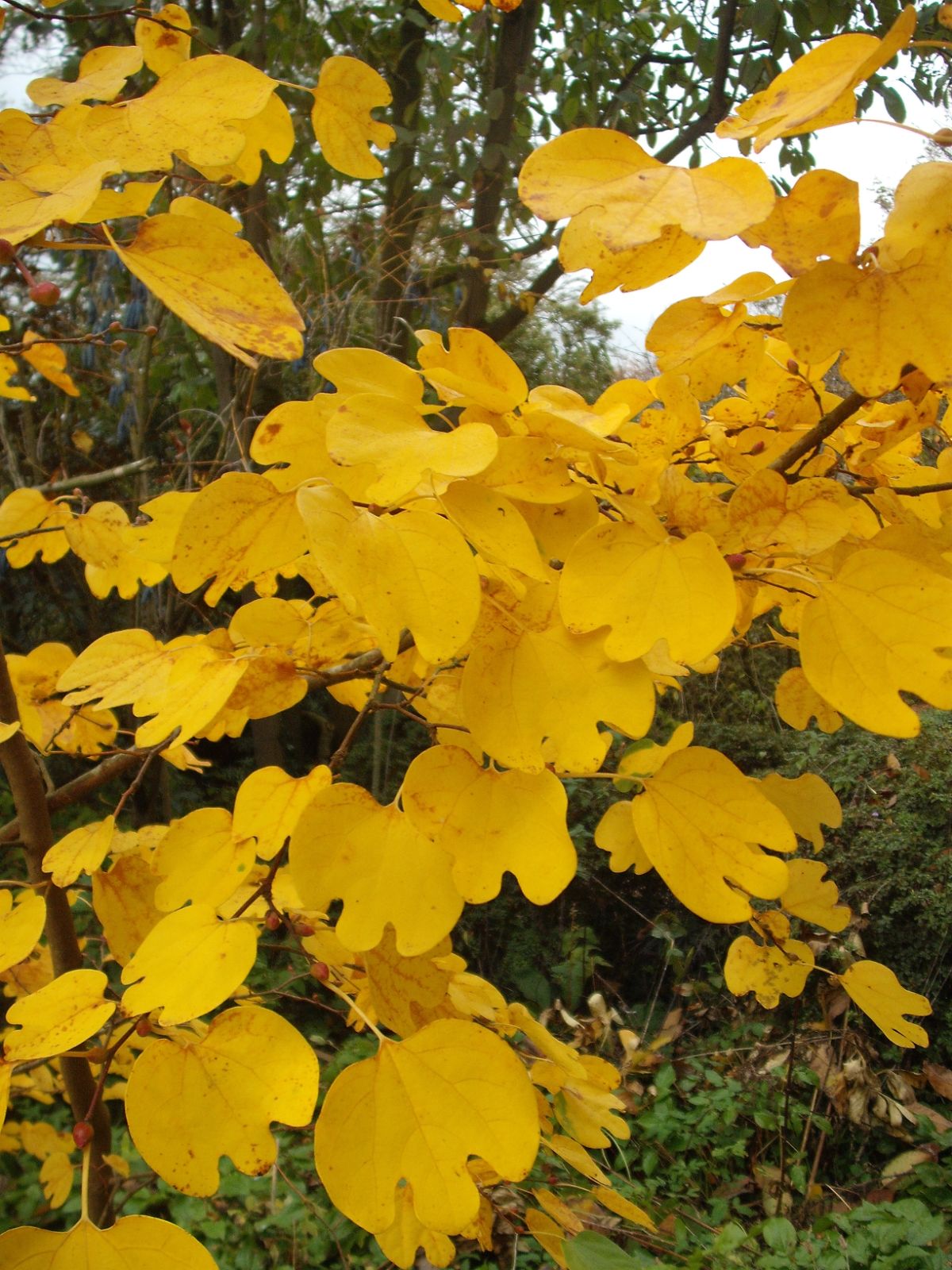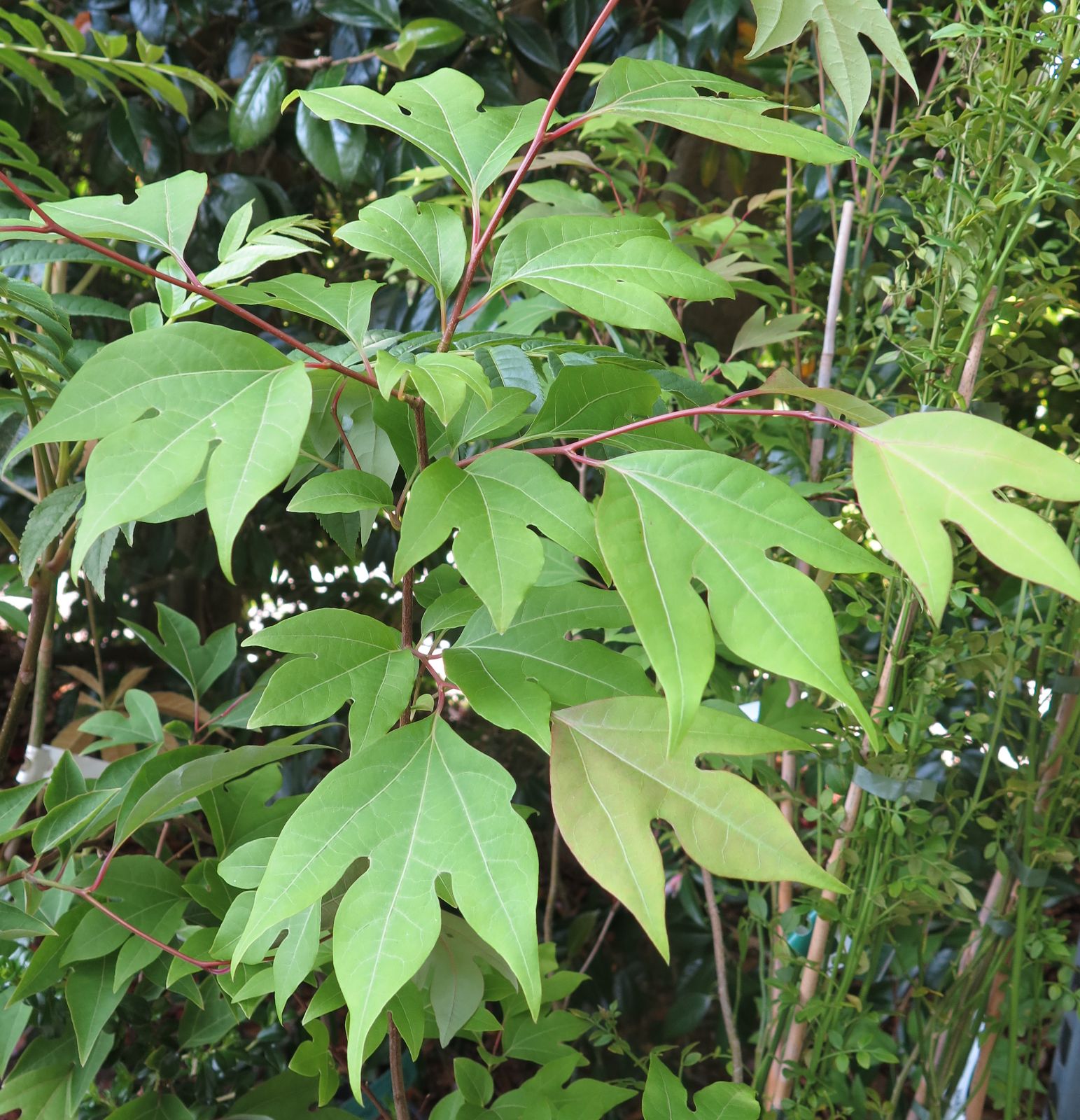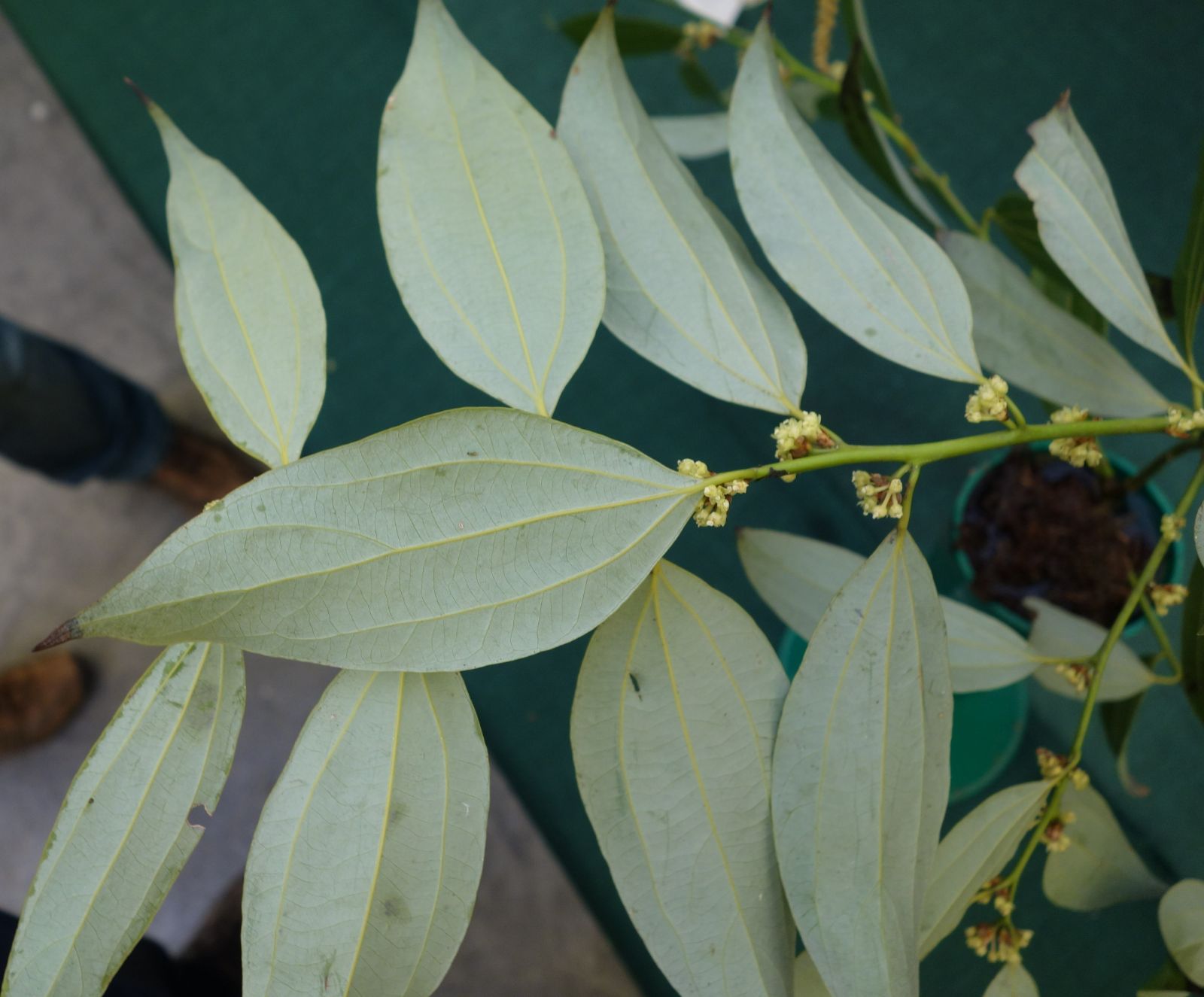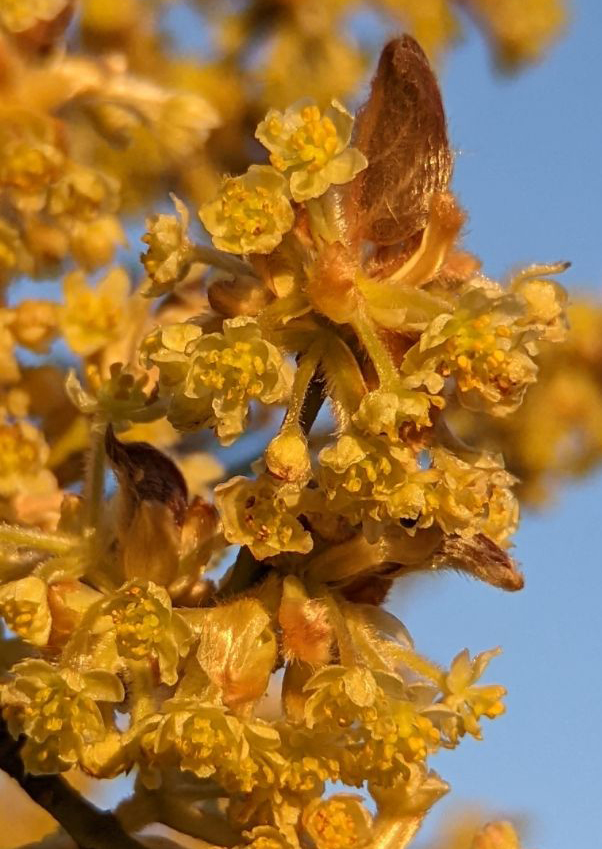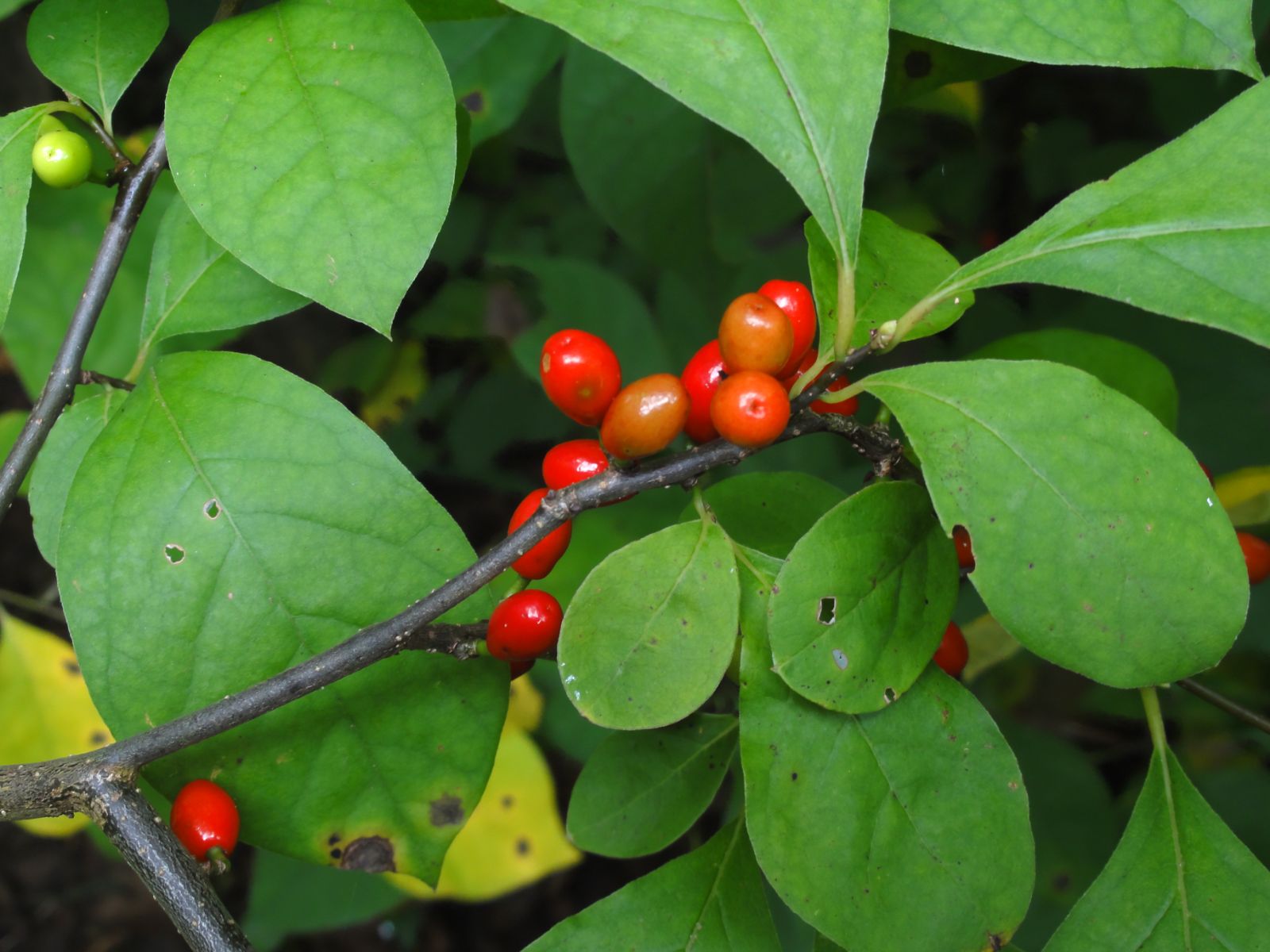Lindera
Sponsor
Kindly sponsored by
a member of the International Dendrology Society
Credits
Julian Sutton (2023)
Recommended citation
Sutton, J. (2023), 'Lindera' from the website Trees and Shrubs Online (treesandshrubsonline.
Family
- Lauraceae
Common Names
- Spicebushes
- Linderas
Synonyms
- Benzoin Nees
- Parabenzoin Nakai
Species in genus
- Lindera aggregata
- Lindera akoensis
- Lindera angustifolia
- Lindera assamica
- Lindera benzoin
- Lindera chienii
- Lindera communis
- Lindera erythrocarpa
- Lindera floribunda
- Lindera fragrans
- Lindera glauca
- Lindera megaphylla
- Lindera melissifolia
- Lindera metcalfiana
- Lindera neesiana
- Lindera obtusiloba
- Lindera praecox
- Lindera pulcherrima
- Lindera reflexa
- Lindera rubronervia
- Lindera sericea
- Lindera tonkinensis
- Lindera triloba
- Lindera umbellata
About 100 species of evergreen or deciduous trees and shrubs, Asiatic except for one species in tropical Australia and three in North America. Leaves aromatic, alternate; margins entire or lobed, pinnately veined, trinerved, or triplinerved. Plants dioecious, although in some species a few hermaphrodite flowers may occur. Inflorescence axillary or clustered on short axillary branches; a pseudo-umbel, stalked or not, with an involucre of 2 pairs of decussate bracts. Flowers yellow or greenish yellow, in deciduous species appearing before or with the leaves. Tepals 6(–9) or absent, equal in size or outer whorl slightly larger, usually deciduous. Male flowers with 9 (or 12) fertile stamens, usually in 3 whorls; anthers 2-celled, introrse; reduced gynoecium small, sometimes with style and stigma joined as a small mucro. Female flowers with 9 (or 12 or 15) fasciated staminodes; ovary globose or ellipsoid. Fruit a berry or drupe, globose or ellipsoid, green when young and red or purple at maturity, with 1 seed; seated in a cup, usually shallow, sometimes partly enclosed by persistent perianth. (Cui & van der Werff 2008; Wofford 1997; Kostermans 1957).
Several things conspire to make Lindera something of a Cinderella genus in gardens, even though at their best the spicebushes contribute flower, attractive foliage, fruit (usually small), and excellent autumn colour. Firstly, this is a large and diverse genus with its centre of diversity in warm-temperate to tropical East Asia. Barely a quarter of the c. 100 known species, mostly hardier ones with more northerly ranges, have made it into western gardens. Most of these grow best in areas with warm summers but not excessively cold winters, restricting their use. Secondly, they are hard to identify, even to generic level. To be confident that a newly collected species belongs in Lindera rather than, say, Litsea or Neolitsea requires close observation of flowers and more; one rarely gets a reliable sense of ‘linderaness’ as one might with Deutzia or Forsythia, for example. Next, all species are dioecious (though a couple can be apomictic), so to get full garden benefit – fruit included – males and females need to be grown together. ‘Plant three’ may work in large arboreta, but it can rarely be justified in domestic gardens. Propagation is another obstacle to wider cultivation. Vegetative methods prove difficult, and while seed germination is straightforward, dioecy and cool summers together limit the supply of garden seed. Despite all this, interest in Lindera has increased enormously since the 1980s, especially in the United States, with more species being tried, more widely.
Lindera belongs to the Lauraceae, a plant family which carries with it an aura of taxonomic intractability. The generic name (commemorating the Swedish physician-botanist Johan Linder) first surfaced in 1783, although some species had already been described in Laurus. Its closest relatives seem to be the equally large, equally bewildering genera Litsea, Actinodaphne and Neolitsea, plus the few species of Laurus itself (Chanderbali, van der Werff & Renner 2001; Jo et al. 2019; Li et al. 2004; Tian, Ye & Song 2019; Zhao et al. 2018; Stevens 2023). Traditionally, these genera have been distinguished on a few floral characters (Kostermans 1957): Actinodaphne lacks the involucral bracts seen in the other four genera; Lindera (2-celled anthers) and Litsea (4-celled anthers) have trimerous flowers, while Laurus (2-celled anthers) and Neolitsea (4-celled anthers) have dimerous flowers. Requiring a powerful lens and some dissection, these are not endearing distinctions to the gardener. Specimens in fruit or with female flowers are even harder to identify, but the cupule at the base of the fruit is usually smaller and less conspicuous than in Litsea (Royal Botanic Gardens Kew 2023). Moreover, the limited molecular studies available (see references above) leave no doubt that these are not natural, monophyletic genera. More complete molecular phylogenies followed by serious herbarium work will be needed before anyone can safely propose a set of natural genera which can be recognized morphologically. Change must come, but probably not soon. To sink everything into a natural but almost useless Laurus would surely be an act of desperation.
Lindera flowers are yellow to greenish, very small, and grouped into umbels. In the deciduous species they appear from winter buds, clustered on bare branchlets just before (sometimes with) the new leaves. In evergreens they appear clustered among the leaves, much like laurels (Laurus spp.). The position of umbels, axillary or terminal, or to either side of the young shoot’s base, is a useful identification feature, as is the relative length of pedicel and peduncle (Cui & van der Werff 2008). All species are dioecious, each plant having either male or female flowers. The stamens make male flowers marginally more showy in the garden, but any difference is slight. In some dioecious plants (e.g. Aucuba) flowers of each sex entirely lack organs of the opposite sex. In others, including Lindera, they are still present but in a smaller, non-functional form. The rather flattened staminodes of female flowers are still quite conspicuous; they might have a role in nectar secretion, and at least in L. glauca some low-level pollen production has been detected, opening the possibility of occasional self-fertilization by ‘females’ (Xiong et al. 2020). Rare individuals with both male and female (but not hermaphrodite) flowers are known in L. benzoin (Primack 1985). Another apparent hermaphrodite, a nursery mother-plant of L. triloba is known (Crûg Farm Plants 2023). This is a most desirable trait in gardens and nurseries. Apomixis is well-known in L. glauca, where all-female Japanese populations fruit and seed without pollination (Nakamura et al. 2021). Garden stocks of the related L. angustifolia fruit without a male present (Grimshaw & Bayton 2009).
Flowers have the same general appearance in both deciduous and evergreen species; there is no suggestion that those flowering before the leaves might be wind-pollinated; both sexes produce nectar. In gardens they tend to attract generalist short-tongued insects including bees and flies (pers. obs.). The few studies of wild plants have found the same (Niesenbaum 1993; Tokumoto et al. 2019).
Leaf shape varies considerably, from quite narrowly elliptic-lanceolate in L. angustifolia to orbicular in some forms of L. obtusiloba. Most species have entire leaves, while L. triloba and often L. obtusiloba are attractively 3-lobed. Some of the evergreen species have leaf undersides which are beautifully glaucous (e.g. L. aggregata) or hairy (e.g. L. tonkinensis, on the veins). Pattern of veining is a valuable identification feature (Cui & van der Werff 2008). Some species are clearly pinnately veined, while others are trinerved, with three main veins meeting at the base of the blade. The triplinerved leaf is a variant of the latter, in which two lateral main veins meet the midvein a little above the base. Many of the deciduous species have superb autumn colour, especially (but not only) in areas with warm summers. L. angustifolia holds its dead leaves through the winter in a surprisingly attractive way.
Like many other Lauraceae, all parts of linderas are rich in aromatic oils. Many have been – and continue – to be used in traditional medicine and for producing lubricants. Possible uses in modern medicine are much investigated (see individual species).
Without a reliable, natural classification of the genus, we divide the 23 species described here into four informal groups, based on leaf venation and whether they are evergreen or deciduous.
Group 1: leaves deciduous, tri- or triplinerved. The well known L. obtusiloba with rather broad, often 3-lobed leaves, has a wide range in temperate East Asia; L. triloba, also 3-lobed but with acuminate apices, is a Japanese endemic. The Chinese L. rubronervia and the more wide-ranging L. neesiana both have more or less ovate, unlobed leaves with acuminate apices; both are rare in gardens.
Group 2: leaves evergreen, tri- or triplinerved. L. aggregata, L. floribunda and L. pulcherrima are probably closely related, and have been confused taxonomically: all three have rather rounded leaves with elongated apices. L. fragrans and L. tonkinensis have proportionately narrower leaves, tending more towards lanceolate. All these are found in southern China; most extend further south, but L. pulcherrima also ranges west to the Himalaya.
Group 3: leaves deciduous, pinnately veined. L. benzoin is probably the hardiest lindera, with a wide range in eastern North America; it is widely grown there. Another American species, L. melissifolia, is a rare wetland shrub of the Southeast. Nine further species are Asiatic. Red-fruited L. erythrocarpa is one which can form a small tree; it has been confused with the more shrubby, black-fruited Japanese endemic L. umbellata. The rare L. sericea is also closely comparible to L. umbellata. Free-fruiting L. angustifolia is becoming well known in North American gardens; it has been confused with broader-leaved L. glauca. The rather large-leaved L. reflexa shares its horn-shaped terminal winter buds with L. praecox. L. metcalfiana is unusual in this group in having numbers of umbels clustered below the apex of short axillary branches. We also describe L. chienii, a floriferous shrub, and the recently introduced L. assamica.
Group 4: leaves evergreen, pinnately veined. L. megaphylla stands out as an unambiguously tree-forming species, with strikingly large leaves clustered towards the branch tips. L. communis (widespread in E Asia) and a Taiwanese endemic, L. akoensis, have much smaller leaves.
All Lindera seem to flourish in warm, even hot conditions with ample moisture during the growing season. This may explain why North American more than British gardeners have come to appreciate them; while London-based Bean (1981) described L. benzoin as ‘a neat bush of no particular merit or distinction’, Dirr (1998) in the American Southeast enthused ‘Good shrub… in full sun it makes a splendid plant in flower and fall color’. Most agree that an acidic soil is required; chlorosis soon becomes apparent in alkaline soil, though this can be reversed with sequestered iron (S. Hogan, pers. comm. to Grimshaw & Bayton 2009). Note, however, that L. obtusiloba is often seen on limestone in China (Lancaster & Rix 2019). Full sun or only light shade from a high canopy is ideal, especially for autumn colour. Propagation is normally by seed, which requires a cold stratification (Wharton, Hine & Justice 2005). Pests and diseases are rarely a problem. However, in the American Southeast linderas are affected by Laurel Wilt, caused by a beetle-borne fungus (Olatinwo, Fraedrich & Mayfield 2021).
Spicebushes in general have a reputation for being rather difficult to root from cuttings, though this is far from impossible (Dirr 2009; Raulston 1993). Softwood or semi-ripe cuttings, with warmth and high humidity, seem the best bet. High rates of rooting in mist, with rooting hormone, have been reported for softwood cuttings of L. benzoin (Sicuranza et al. 2005) and semi-ripe L. umbellata (Conden & Blazich 2003). Further experimentation is highly desirable, with the aim of making cultivar selection viable, and for distribution of rare species and forms.
There are not many big collections of Lindera; most arboreta contain a few, but seldom more. The JC Raulston Arboretum, North Carolina, has more than most in our area. In Belgium there is a good selection of the hardier species at Arboretum Wespelaar and Herkenrode.
The horticultural literature on linderas has always been sparse, Grimshaw & Bayton (2009) being the first attempt to cover a full range of more recently introduced species. To go further, one must embrace the botanical literature. Regional floras are essential, especially Flora of China (Cui & van der Werff 2008) although this is not the clearest treatment, and occasionally seems to contradict itself. The American herbarium botanist Caroline Allen’s (1941) discussion of critical East Asian species is enlightening even today. The colourful Indonesian botanist André ‘Dok’ Kostermans’ (1957) revision of the Lauraceae was followed paradoxically by a series of ‘Materials for a Revision of Lauraceae’ (Kostermans 1968; 1969; 1970; 1974; 1988) which includes descriptions of numerous new Lindera species, mostly tropical. One of these papers (Kostermans 1970) is probably unique in botanical literature in beginning with thanks to ‘the Authorities’ for allowing the author to continue working while detained in connection with a murder, along with a protestation of innocence. Immense numbers of images of Chinese species at all stages of growth can be seen on the Plantplus website (Chinese Academy of Sciences 2023); inevitably a tiny number of obviously misidentified plants creep in, but this is a tremendously valuable resource.
Parts of the key presented here are based on Cui & van der Werff (2008). No key can be expected to identify every specimen quickly and reliably; this is all the more true for such a poorly-known genus. We have yet to find a reliable, robust key to a full range of linderas treated here, our own included. For a vegetative key to many cultivated linderas, as seen in gardens, see De Langhe (2017).
Identification key | ||
| 1a | Leaves trinerved or triplinerved | 2 |
| 1b | Leaves pinnately veined | 10 |
| 2a | Leaves deciduous | 3 (Group 1) |
| 2b | Leaves evergreen | 6 (Group 2) |
| Group 1 | ||
| 3a | Some or all leaves 3-lobed | 4 |
| 3b | Leaves unlobed | 5 |
| 4a | Lobes with acuminate apices | L. triloba |
| 4b | Apices rounded or obtuse, sometimes acute, but not acuminate | L. obtusiloba |
| 5a | Leaves elliptic to orbicular, apex not acuminate | L. obtusiloba |
| 5b | Leaves more or less ovate, apex acuminate | L. neesiana / L. rubronervia see text for more details |
| Group 2 | ||
| 6a | Inflorescences distinctly pedunculate | L. tonkinensis |
| 6b | Inflorescences sessile, or on very short peduncles | 7 |
| 7a | First year branchlets and leaf undersurfaces persistently, densely hairy | 8 |
| 7b | First year branchlets and leaf undersurfaces variably hairy at first, becoming only sparsely hairy or glabrous | 9 |
| 8a | Young branchlets and leaf undersurfaces golden-sericeous | L. aggregata |
| 8b | Young branchlets and leaf undersurfaces grey-brown hairy | L. floribunda |
| 9a | Lateral veins raised more on the upper leaf surface than the lower; ovary, style and filaments glabrous | L. fragrans |
| 9b | Lateral veins raised more on the lower leaf surface than the upper; ovary, style and filaments hairy | L. pulcherrima |
| 10a | Leaves deciduous | 11 (Group 3) |
| 10b | Leaves evergreen | 23 (Group 4) |
| Group 3 | ||
| 11a | Leaf blade thick and leathery, lanceolate | L. metcalfiana var. dictyophylla |
| 11b | Leaf blade not thick and leathery, shape various | 12 |
| 12a | Leaf base narrowly cuneate, usually decurrent on petiole | L. erythrocarpa |
| 12b | Leaf base cuneate or rounded, not decurrent | 13 |
| 13a | Fine reticulate venation strikingly raised on lower surface; leaf blade elliptic, 9–16 cm | L. assamica |
| 13b | Venation not as above; leaf blade various | 14 |
| 14a | Leaves with short, persistent hairs covering both surfaces | L. sericea |
| 14b | Leaf hairs not as above, any on upper surface not persistent except rarely on the midrib | 15 |
| 15a | Most leaves with 4 pairs of lateral veins; both surfaces glabrous | L. praecox |
| 15b | Most leaves with more than 4 pairs of lateral veins | 16 |
| 16a | Leaf apex not acuminate | 17 |
| 16b | Leaf apex more or less acuminate, at least on larger leaves | 18 |
| 17a | Leaves drooping, bases rounded or broadly cuneate; flowers usually before leaf emergence; low wetland shrub, native to SE North America; very rare in cultivation | L. mellisifolia |
| 17b | Leaves drooping, bases rounded or broadly cuneate; flowers usually before leaf emergence; low wetland shrub, native to SE North America; very rare in cultivation | L. umbellata |
| 18a | Winter buds red, horn shaped | L. reflexa |
| 18b | Winter buds not as above | 19 |
| 19a | Young branchlets glabrous | 20 |
| 19b | Young branchlets hairy, at last initially | 21 |
| 20a | Leaf proportionately broad, obovate to elliptic; N America | L. benzoin |
| 20b | Leaf narrow, elliptic-lanceolate | L. angustifolia |
| 21a | Umbels distinctly pedunculate | L. chienii |
| 21b | Umbels sessile, or very shortly pedunculate | 22 |
| 22a | Leaves white pubescent beneath; young branchlets whitish; E Asia | L. glauca |
| 22b | Leaves glabrous or sparsely hairy beneath; young branchlets brown or olive; N America | L. benzoin |
| Group 4 | ||
| 23a | Tree; leaf blade 10–23 cm long, with more than 10 pairs of lateral veins | L. megaphylla |
| 23b | Shrub or small tree; leaves shorter, with less than 10 pairs of lateral veins | 24 |
| 24a | Perianth tube obconical; leaf blade 3–5 cm long; Taiwan | L. akoensis |
| 24b | Perianth tube indistinct; leaf blade 4–9 cm; widespread in E Asia, including Taiwan | L. communis |

